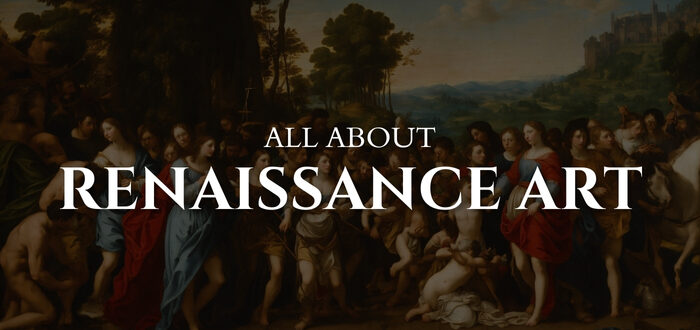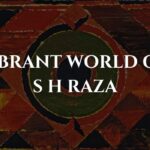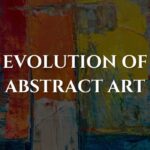The Renaissance Reimagined In India
From the Medieval art period to the ages of Impressionism to Modern art, the world of art has seen its fair share of influential movements. One of the most influential major art movements is the Renaissance period. The Renaissance period had the most profound and far-reaching influence of any art movement to date.
From Darkness to Light: The Renaissance Begins
During the Middle Ages, a period that took place between the fall of ancient Rome in 476 A.D. and the beginning of the 14th century, Europeans made few advances in science and art. The Renaissance, meaning “rebirth,” began in Italy during the 14th century and lasted until the 17th century. It was a time of great intellectual and cultural flourishing, spurred by a renewed interest in the classical arts of Ancient Greece and Rome. This period witnessed the creation of some of the most enduring masterpieces in the history of art. Renaissance paintings by artists like Leonardo da Vinci, Michelangelo, and Raphael played pivotal roles in defining the artistic ideals of the time.
Medici Family
The Renaissance started in Florence, Italy, a place with a rich cultural history where wealthy citizens could afford to support budding artists.
Members of the powerful Medici family, which ruled Florence for more than 60 years, were famous backers of the movement.
The movement first expanded to other Italian city-states, such as Venice, Milan, Bologna, Ferrara and Rome. Then, during the 15th century, Renaissance ideas spread from Italy to France and then throughout western and northern Europe.
Renaissance: Impact on Art
Art, architecture, and science were closely linked during the Renaissance. In fact, it was a unique time when these fields of study fused together seamlessly.
For instance, artists like Da Vinci incorporated scientific principles, such as anatomy into their work, so they could recreate the human body with extraordinary precision. Another artist whose work was pivotal during the Renaissance period was Michelangelo. Some of Michelangelo’s paintings are the most celebrated works of the Renaissance.
Renaissance art was characterized by realism and naturalism. Artists strived to depict people and objects in a true-to-life way. Emotion was another quality that artists tried to infuse into their pieces.
Some of the most famous artistic works that were produced during the Renaissance include:
Statue of David (Michelangelo)
The Birth of Venus (Botticelli)
The Creation of Adam (Michelangelo)
The Last Judgement (Michelangelo)
Global Spread and Influence of Renaissance Art
The influence of Renaissance art extended far beyond the borders of Italy, reaching other parts of Europe and eventually the rest of the world. The spread of these ideas was facilitated by trade, exploration, and the movement of scholars and artists.
The Portuguese, who were among the first Europeans to establish trade routes to India, played a significant role in introducing Renaissance art to Indian artists.
Indian Renaissance Paintings
The encounter between Renaissance art and Indian art was gradual but profound. During the Mughal period (16th to 18th centuries), Indian art began to incorporate elements of European realism and perspective, which were previously foreign to traditional Indian artistic conventions. The Mughal emperors, particularly Akbar and Jahangir, were patrons of the arts and were open to new ideas and influences.
Mughal miniatures, known for their intricate detail and vibrant colours, began to exhibit signs of Renaissance influence. Similarly, Rajput art, particularly in regions like Rajasthan, also absorbed these European techniques while retaining its distinct Indian aesthetics.
The influence of Renaissance art continued to be felt during the colonial period, particularly in the works of Indian artists who were exposed to Western education and artistic training. The British colonial administration established art schools in India, where the curriculum was heavily influenced by European classical traditions. This period saw the emergence of Indian artists who combined Renaissance techniques with Indian themes, creating a new genre of art that was both modern and deeply rooted in Indian culture.
One of the most prominent figures in this movement was Raja Ravi Varma, who is often credited with pioneering the modern Indian art movement. Varma was profoundly influenced by European realism and Renaissance art. His works are known for their lifelike representations, use of perspective, and dramatic compositions, all of which were hallmarks of Renaissance art.
Cultural Exchange: Renaissance Art and Indian Aesthetics
The influence of Renaissance art on Indian artists was not just a one-way exchange; it was a dialogue that enriched both traditions. Indian artists did not merely imitate Western techniques; they adapted and transformed them to fit the cultural and aesthetic context of India. This process of cultural exchange led to the creation of art that was both globally informed and distinctly Indian.
The Start of The Bengal Renaissance Movement
Post 18th century, realism and Western ideologies had influenced Indian art. Indian art styles were considered inferior. Abanindranath Tagore started the Bengal School of Art and reintroduced folk art, tribal art, and mythological influences to Indian painting. Thus, the Bengal Renaissance allowed artists to redefine their artistic voice and brought India’s rich art heritage and culture to the limelight.
The start of this movement led to women artists Sunayani Devi and Pratima Deviv gaining international recognition. The subsequent establishment of Kala Bhavan led to the rise of several prominent women artists, such as Sukumari Devi.
Also read: A Guide to Art Movements in India
End of the Renaissance
Scholars believe the demise of the Renaissance was the result of several compounding factors.
By the end of the 15th century, numerous wars had plagued the Italian peninsula. Spanish, French and German invaders battling for Italian territories caused disruption and instability in the region.
Also, changing trade routes led to a period of economic decline and limited the amount of money that wealthy contributors could spend on the arts.
Later, in a movement known as the Counter-Reformation, the Catholic church censored artists and writers in response to the Protestant Reformation. Many Renaissance thinkers feared being too bold, which stifled creativity.
By the early 17th century, the Renaissance movement had died out, giving way to the Age of Enlightenment.
Conclusion
The Renaissance period, with its emphasis on realism, humanism, and perspective, has had a profound and enduring impact on modern art, shaping the works of many contemporary artists, including those in India. In India, the Renaissance’s impact can be seen in the works of artists like Jamini Roy and T. Vaikuntam. Jamini Roy, often referred to as the father of the “folk renaissance” in India, drew heavily from both traditional Bengali folk art and European modernism. T. Vaikuntam, another prominent contemporary Indian artist, similarly draws on the techniques and principles rooted in Renaissance art while staying true to his Indian heritage. Both Jamini Roy and T. Vaikuntam, among others, continue to inspire new generations of artists, showcasing how Renaissance principles have been adapted to create works that are both globally relevant and deeply personal to the Indian context.
Giftex Art October: Masterpieces Under the Hammer
Join us on 14-15 October at the Giftex Art Auction, where history meets the present in an extraordinary collection of famous works from renowned artists like Jamini Roy, T. Vaikuntam, M F Husain, and more. Don’t miss your chance to own a piece of art history! From Impressionist gems to realist marvels, this exclusive event offers a rare opportunity to acquire works that inspire and captivate.
Mark your calendar and get ready to bid on brilliance!






